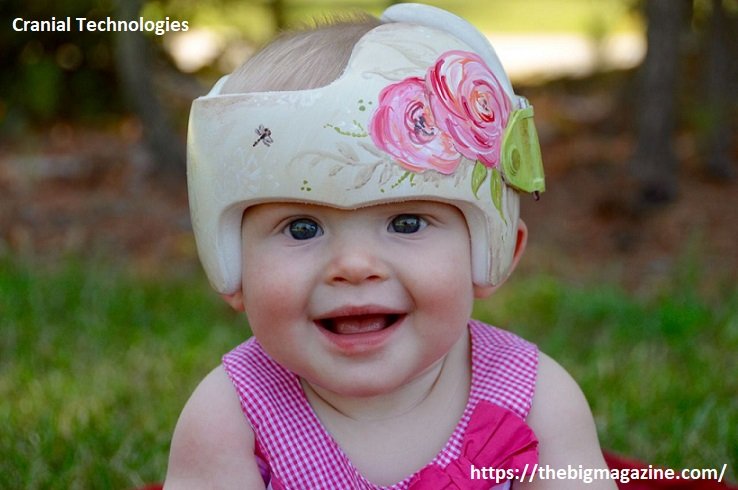Introduction
Cranial Technologies have become a pivotal topic in pediatric healthcare, particularly concerning the diagnosis and treatment of plagiocephaly. Plagiocephaly, often referred to as flat head syndrome, is a condition characterized by the asymmetrical flattening of a baby’s skull. This condition can have significant implications on a child’s development and appearance if not addressed promptly and adequately. In this article, we will delve into the various aspects of cranial technologies, including the causes, diagnosis, treatment options, and advancements in Cranial Technologies that have improved the outcomes for children with plagiocephaly.
What is Plagiocephaly?
Plagiocephaly is a condition where a baby’s head develops a flat spot or becomes misshapen. This can occur either in the womb or during the early months of life when a baby’s skull is still soft and malleable. There are two primary types of plagiocephaly:
- Positional Plagiocephaly: This occurs when a baby consistently lies in one position, causing the skull to flatten in that area.
- Congenital Plagiocephaly: This form is present at birth and is often caused by restricted movement in the womb or pressure on the skull during delivery.
Causes of Plagiocephaly
Several factors can contribute to the development of plagiocephaly. Some of the most common causes include:
- Prolonged Supine Positioning: Babies who spend a lot of time lying on their backs can develop flat spots on their heads. This is often seen in babies who sleep in the same position every night.
- Torticollis: This condition, characterized by tight neck muscles, can cause a baby to hold their head in one position, leading to an asymmetrical skull shape.
- Multiple Births: Twins or multiples are at a higher risk of plagiocephaly due to the limited space in the womb.
- Premature Birth: Premature babies have softer skulls and often spend extended periods in neonatal intensive care units, where they may be placed in positions that contribute to flat head syndrome.
Diagnosing Plagiocephaly
Early diagnosis of plagiocephaly is crucial for effective treatment. Pediatricians typically diagnose this condition through physical examination and the measurement of the baby’s head. Key diagnostic indicators include:
- Visual Assessment: Checking for flat spots or asymmetry in the baby’s head shape.
- Cranial Measurements: Using calipers or other tools to measure the dimensions of the baby’s head and identify any discrepancies.
- Imaging Studies: In some cases, imaging studies such as X-rays or CT scans may be used to rule out other conditions and confirm the diagnosis.

Treatment Options for Plagiocephaly
Treatment for plagiocephaly varies depending on the severity of the condition and the age of the baby. Common treatment options include:
Repositioning Techniques
For mild cases of positional plagiocephaly, repositioning techniques can be highly effective. Parents are encouraged to:
- Alternate Head Positions: Change the baby’s head position during sleep and play to prevent constant pressure on one spot.
- Tummy Time: Increase supervised tummy time to strengthen neck muscles and relieve pressure on the back of the head.
- Limit Time in Car Seats and Bouncers: Reduce the amount of time the baby spends in devices that restrict movement and contribute to flat spots.
Physical Therapy
Physical therapy can be beneficial, especially for babies with torticollis. Therapists work with the baby to:
- Stretch and Strengthen Neck Muscles: Improve the range of motion and correct the baby’s head position.
- Develop Motor Skills: Encourage balanced muscle development and movement patterns.
Helmet Therapy
Helmet therapy, also known as cranial orthotic therapy, is often recommended for moderate to severe cases of plagiocephaly. Custom-fitted helmets help reshape the baby’s skull by:
- Applying Gentle Pressure: Directing growth towards the flatter areas and allowing the head to round out over time.
- Wearing Schedule: Babies typically wear the helmet for 23 hours a day, with adjustments made regularly to ensure proper fit and effectiveness.
Advancements in Cranial Technologies
Recent advancements in cranial technologies have significantly improved the treatment outcomes for plagiocephaly. Innovations include:
3D Imaging and Printing
3D imaging and printing Cranial Technologies have revolutionized the way helmets are designed and fitted. These Cranial Technologies provide:
- Accurate Head Scans: Detailed 3D scans of the baby’s head ensure a precise fit for the custom helmet.
- Rapid Production: 3D printing allows for quicker production of helmets, reducing waiting times for families.
Smart Helmets
Smart helmets incorporate sensors and monitoring systems to track the progress of plagiocephaly treatment. These helmets offer:
- Real-Time Data: Parents and healthcare providers can monitor the baby’s head growth and make adjustments as needed.
- Enhanced Comfort: Improved designs that are lighter and more comfortable for babies to wear.
Telehealth Consultations
The integration of telehealth services has made it easier for families to access specialized care for plagiocephaly. Benefits include:
- Remote Consultations: Families can receive expert advice and follow-up care without the need for frequent in-person visits.
- Accessible Support: Parents can connect with therapists and specialists to address concerns and receive guidance on treatment strategies.

Conclusion
Understanding and addressing plagiocephaly through the use of advanced cranial technologies is crucial for ensuring optimal outcomes for affected children. Early diagnosis, effective treatment strategies, and continuous advancements in Cranial technologies have made it possible to correct head shape abnormalities and support healthy development. By staying informed and proactive, parents and healthcare providers can work together to ensure the best possible care for babies with plagiocephaly.
